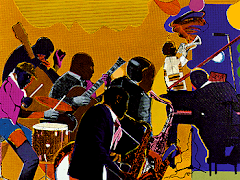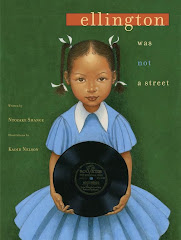


Yesterday, I had one of those a-ha moments when something I hadn’t quite understood in the past became crystal clear. There’s a Sweet Honey in the Rock song called Are My Hands Clean. My mother on several occasions tried to get me to really listen to this song and understand it. Yesterday, I went to a women’s film festival sponsored by the Leeway Foundation and some other organizations. I saw several films, but the one that made the meaning of Are My Hands Clean so clear was the film Made in LA. I have a lot to share about this film and information when you can see it as well. I will review it tomorrow. For now read the lyrics to Are My Hands Clean and listen to the song as well.
Are My Hands Clean?
Lyrics and music by Bernice Johnson Reagon. Songtalk Publishing Co. 1985
Performed by Sweet Honey in the Rock. Sweet Honey in the Rock, Live at Carnegie Hall
I wear garments touched by hands from all over the world
35% cotton, 65% polyester, the journey begins in Central America
In the cotton fields of El Salvador
In a province soaked in blood,
Pesticide-sprayed workers toil in a broiling sun
Pulling cotton for two dollars a day.
Then we move on up to another rung—Cargill
A top-forty trading conglomerate, takes the cotton through the Panama Canal
Up the Eastern seaboard, coming to the US of A for the first time
In South Carolina
At the Burlington mills
Joins a shipment of polyester filament courtesy of the New Jersey petro-chemical mills of
Dupont
Dupont strands of filament begin in the South American country of Venezuela Where oil
riggers bring up oil from the earth for six dollars a day
Then Exxon, largest oil company in the world,
Upgrades the product in the country of Trinidad and Tobago
Then back into the Caribbean and Atlantic Seas
To the factories of Dupont
On the way to the Burlington mills
In South Carolina
To meet the cotton from the blood-soaked fields of El Salvador
In South Carolina
Burlington factories hum with the business of weaving oil and cotton into miles of fabric
for Sears
Who takes this bounty back into the Caribbean Sea
Headed for Haiti this time—May she be one day soon free—
Far from the Port-au-Prince palace
Third world women toil doing piece work to Sears specifications
For three dollars a day my sisters make my blouse
It leaves the third world for the last time
Coming back into the sea to be sealed in plastic for me
This third world sister
And I go to the Sears department store where I buy my blouse
On sale for 20% discount
Are my hands clean?
Click the link below to listen to this song.
http://new.music.yahoo.com/sweet-honey-in-the-rock/tracks/are-my-hands-clean--840319
Are My Hands Clean?
Lyrics and music by Bernice Johnson Reagon. Songtalk Publishing Co. 1985
Performed by Sweet Honey in the Rock. Sweet Honey in the Rock, Live at Carnegie Hall
I wear garments touched by hands from all over the world
35% cotton, 65% polyester, the journey begins in Central America
In the cotton fields of El Salvador
In a province soaked in blood,
Pesticide-sprayed workers toil in a broiling sun
Pulling cotton for two dollars a day.
Then we move on up to another rung—Cargill
A top-forty trading conglomerate, takes the cotton through the Panama Canal
Up the Eastern seaboard, coming to the US of A for the first time
In South Carolina
At the Burlington mills
Joins a shipment of polyester filament courtesy of the New Jersey petro-chemical mills of
Dupont
Dupont strands of filament begin in the South American country of Venezuela Where oil
riggers bring up oil from the earth for six dollars a day
Then Exxon, largest oil company in the world,
Upgrades the product in the country of Trinidad and Tobago
Then back into the Caribbean and Atlantic Seas
To the factories of Dupont
On the way to the Burlington mills
In South Carolina
To meet the cotton from the blood-soaked fields of El Salvador
In South Carolina
Burlington factories hum with the business of weaving oil and cotton into miles of fabric
for Sears
Who takes this bounty back into the Caribbean Sea
Headed for Haiti this time—May she be one day soon free—
Far from the Port-au-Prince palace
Third world women toil doing piece work to Sears specifications
For three dollars a day my sisters make my blouse
It leaves the third world for the last time
Coming back into the sea to be sealed in plastic for me
This third world sister
And I go to the Sears department store where I buy my blouse
On sale for 20% discount
Are my hands clean?
Click the link below to listen to this song.
http://new.music.yahoo.com/sweet-honey-in-the-rock/tracks/are-my-hands-clean--840319




































